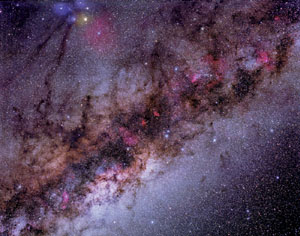Ordinary matter composed of baryons – essentially protons and neutrons – is responsible for only a tenth of the gravitation observed in the universe. This result has just been independently confirmed by measuring the abundance of helium-3 ions in our galaxy.

The abundance of helium-3 is observed by measurements of its 8.665 GHz spin-flip transition. Observations made using the US National Radio Astronomy Observatory’s radiotelescope at Green Bank, West Virginia, show that the concentration of helium-3 is almost the same in star-forming regions as in the rest of the Milky Way. This suggests that stars enrich the interstellar medium with helium-3 very little and therefore that the quantity of helium-3 in our galaxy has hardly increased since the Big Bang.

The abundance of baryons with respect to photons in the universe is linked directly to the concentration of helium-3 relative to hydrogen. Measurements of helium-3 in our galaxy indicate that ordinary matter – in the form of baryons – represents only about 4% of the total matter and energy content of the universe. The rest of the universe appears to consist of non-baryonic dark matter of an as yet unknown nature and “dark energy”, the repulsive force that is considered to be responsible for accelerating the rate of expansion of the universe.
Further reading
T M Bania, Robert T Rood and Dana S Balser Nature 2002 415 54.








